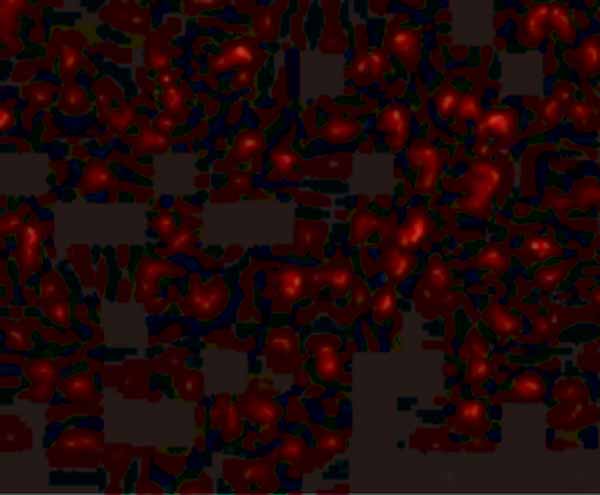KINDLIN3 Antibody
- SPECIFICATION
- CITATIONS
- PROTOCOLS
- BACKGROUND

Application
| WB, E |
|---|---|
| Primary Accession | Q86UX7 |
| Other Accession | NP_848537, 83706 |
| Reactivity | Human, Mouse, Rat |
| Host | Rabbit |
| Clonality | Polyclonal |
| Isotype | IgG |
| Calculated MW | 75953 Da |
| Application Notes | KINDLIN3 antibody can be used for detection of KINDLIN3 by Western blot at 1 and 2 μg/mL. |
| Gene ID | 83706 |
|---|---|
| Target/Specificity | KINDLIN3 antibody was raised against a 19 amino acid synthetic peptide near the carboxy terminus of the human KINDLIN3. The immunogen is located within the last 50 amino acids of KINDLIN3. |
| Reconstitution & Storage | KINDLIN3 antibody can be stored at 4℃ for three months and -20℃, stable for up to one year. As with all antibodies care should be taken to avoid repeated freeze thaw cycles. Antibodies should not be exposed to prolonged high temperatures. |
| Precautions | KINDLIN3 Antibody is for research use only and not for use in diagnostic or therapeutic procedures. |
| Name | FERMT3 |
|---|---|
| Synonyms | KIND3, MIG2B, URP2 |
| Function | Plays a central role in cell adhesion in hematopoietic cells (PubMed:19234463, PubMed:26359933). Acts by activating the integrin beta-1-3 (ITGB1, ITGB2 and ITGB3) (By similarity). Required for integrin-mediated platelet adhesion and leukocyte adhesion to endothelial cells (PubMed:19234460). Required for activation of integrin beta-2 (ITGB2) in polymorphonuclear granulocytes (PMNs) (By similarity). |
| Cellular Location | Cell projection, podosome. Note=Present in the F-actin surrounding ring structure of podosomes, which are specialized adhesion structures of hematopoietic cells |
| Tissue Location | Highly expressed in lymph node. Expressed in thymus, spleen and leukocytes. Weakly expressed in placenta, small intestine, stomach, testis and lung. Overexpressed in B-cell malignancies. |

Thousands of laboratories across the world have published research that depended on the performance of antibodies from Abcepta to advance their research. Check out links to articles that cite our products in major peer-reviewed journals, organized by research category.
info@abcepta.com, and receive a free "I Love Antibodies" mug.
Provided below are standard protocols that you may find useful for product applications.
Background
KINDLIN3 Antibody: The three KINDLINs are a novel family of focal adhesion proteins, localizing to integrin adhesion sites. The KINDLIN proteins are composed of a centrally located FERM domain interrupted by a pleckstrin homology (PH) domain. KINDLIN1 and KINDLIN2 have been shown to play an essential role in integrin-mediated adhesion and spreading. In contrast to the widely expressed KINDLIN1 and KINDLIN2, KINDLIN3 is restricted to hematopoietic cells and is particularly abundant in megakaryocytes and platelets. Several reports describe a transcriptional misregulation of KINDLINs in various types of cancer. A recent study demonstrates that KINDLIN3 is essential for platelet integrin activation and subsequent integrin outside-in signaling, suggesting it may serve as a potential target for the design of therapeutics aimed at specifically disrupting integrin activation in platelets and leukocytes.
References
Ussar S, Wang HV, Linder S, et al. The Kindlins: subcellular localization and expression during murine development. Exp. Cell Res.2006; 312:3142-51.
Weinstein EJ, Bourner M, Head R, et al. URP1: a member of a novel family of PH and FERM domain-containing membrane-associated proteins is significantly over-expressed in lung and colon carcinomas. Biochim. Biophys. Acta2003; 1637:207-16.
Boyd RS, Adam PJ, Patel S, et al. Proteomic analysis of the cell-surface membrane in chronic lymphocytic leukemia: identification of two novel proteins, BCNP1 and MIG2B. Leukemia2003; 17:1605-12.
Mory A, Feigelson SW, Yarali N, et al. Kindlin-3: a new gene involved in the pathogenesis of LAD-III. Blood2008; 112:2591.
If you have used an Abcepta product and would like to share how it has performed, please click on the "Submit Review" button and provide the requested information. Our staff will examine and post your review and contact you if needed.
If you have any additional inquiries please email technical services at tech@abcepta.com.













 Foundational characteristics of cancer include proliferation, angiogenesis, migration, evasion of apoptosis, and cellular immortality. Find key markers for these cellular processes and antibodies to detect them.
Foundational characteristics of cancer include proliferation, angiogenesis, migration, evasion of apoptosis, and cellular immortality. Find key markers for these cellular processes and antibodies to detect them. The SUMOplot™ Analysis Program predicts and scores sumoylation sites in your protein. SUMOylation is a post-translational modification involved in various cellular processes, such as nuclear-cytosolic transport, transcriptional regulation, apoptosis, protein stability, response to stress, and progression through the cell cycle.
The SUMOplot™ Analysis Program predicts and scores sumoylation sites in your protein. SUMOylation is a post-translational modification involved in various cellular processes, such as nuclear-cytosolic transport, transcriptional regulation, apoptosis, protein stability, response to stress, and progression through the cell cycle. The Autophagy Receptor Motif Plotter predicts and scores autophagy receptor binding sites in your protein. Identifying proteins connected to this pathway is critical to understanding the role of autophagy in physiological as well as pathological processes such as development, differentiation, neurodegenerative diseases, stress, infection, and cancer.
The Autophagy Receptor Motif Plotter predicts and scores autophagy receptor binding sites in your protein. Identifying proteins connected to this pathway is critical to understanding the role of autophagy in physiological as well as pathological processes such as development, differentiation, neurodegenerative diseases, stress, infection, and cancer.


